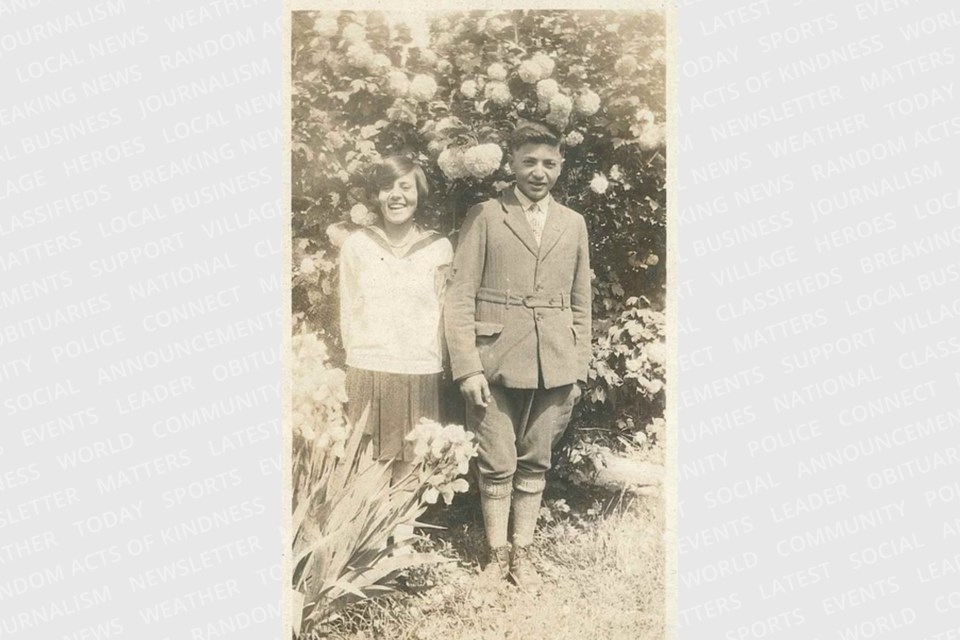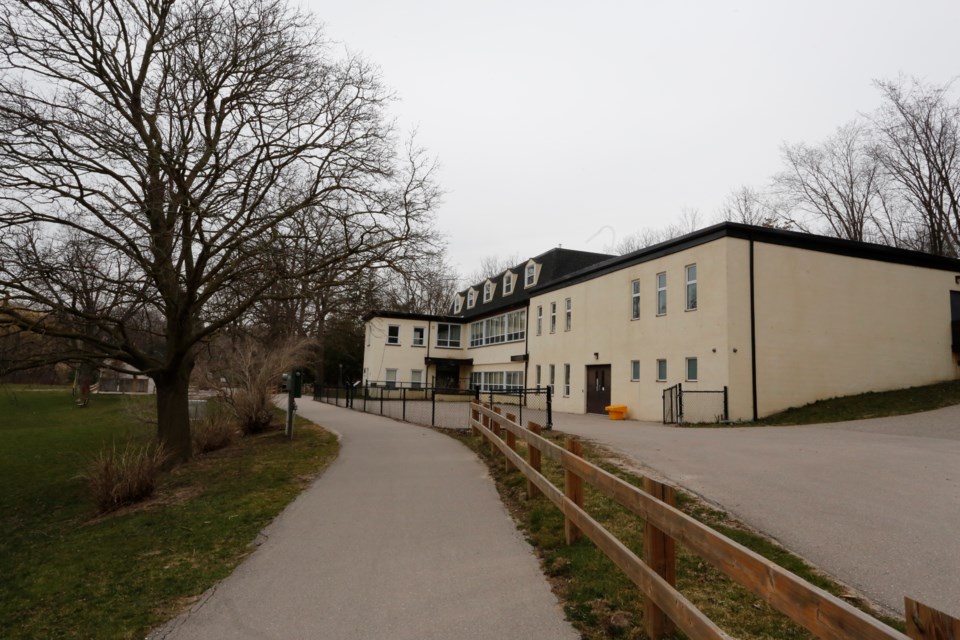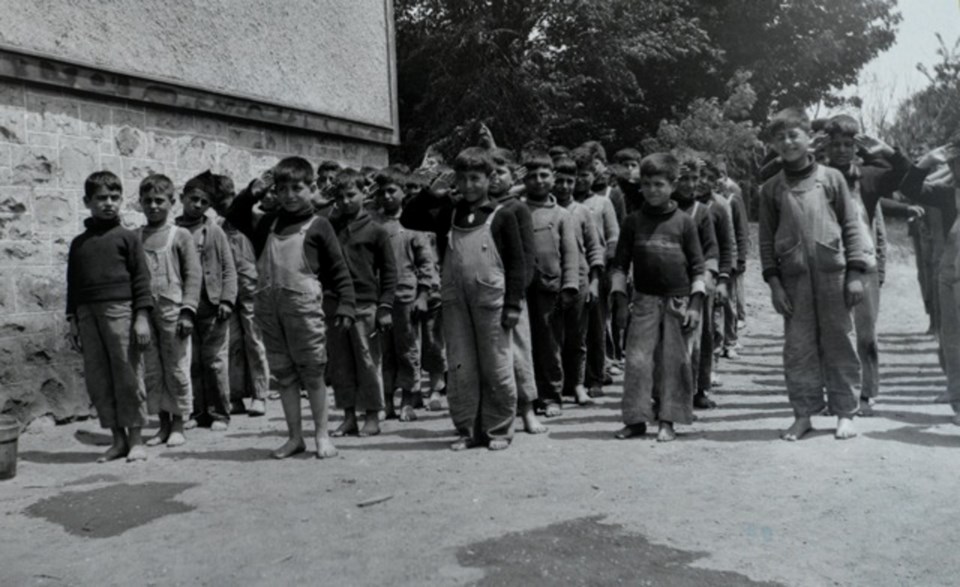They are all gone now, so we can never directly hear what they have to say about Georgetown’s Cedarvale Park. But Canada and Armenian Canadians have not forgotten the role the local green space played in history.
Dubbed the Georgetown Boys – a misnomer as there were many girls too – they were rescued by Canadians from the clutches of an orphan’s lonely death. In Georgetown, the federal government and several benefactors hoped to turn these orphans into good farmers. Cedarvale Park, then a farm, served as their home and proving ground.
But the absence of the boys and girls today creates an undeserved illusion that Cedarvale Park is unremarkable. The painstaking work of historians, archivists and community leaders, many of whom are Armenian, keep the memory alive. Without them, visitors would miss the park’s connection with the First World War and, more importantly, the Armenian Genocide.
“Armenians are obsessed by 1915,” said Lorne Shirinian, a descendent of the so-called Georgetown Boys.
Shirinian is the son of Mampre Shirinian, a Georgetown Boy and Mariam Mazmanian, a Georgetown Girl. Her brother, Ardeshes Mazmanian, was also a Georgetown Boy.

The Mazmanian siblings likely survived when their parents gave them to Turkish neighbours. Neither appeared to know how they escaped the genocide as they were too young to remember. What they do know is that they lost a brother and both parents in the chaos.
Lorne Shirinian’s father did not talk much about his experiences with the genocide. Shirinian the younger understands that his father was alone from 1915 to 1918.
The orphans getting picked to come to Canada was, in effect, a lottery.
“My father tells me one day all the boys, almost a thousand boys, were lined up and the relief workers came and they asked, ‘Who wants to go to Canada?” Lorne Shirinian said.
“They went through picking randomly. ‘You, you, you.’ And my father was randomly picked. And my uncle did come to Canada randomly.”
Ardeshes and Mariam were separated at some point. While her brother languished at a Corfu orphanage, Mariam ended up at one in Syro, Greece. Once he arrived in Canada with the first group of boys in 1923, Ardeshes pleaded with ARAC to have his sister come to Georgetown. They were reunited in 1927. Mampre Shirinian arrived in 1924 with the second group of boys.
Mampre Shirinian and Mariam Mazmanian married in 1935 after meeting at Cedarvale Farm. Their son Lorne was born 10 years later, beginning a long life of being surrounded by the Georgetown orphans.
“The Georgetown Boys would drop in all the time. On the weekends, there would be parties. There would be making sheesh kabob on the barbecue. There were dances in the backyard, much to the chagrin of the neighbours,” Shirinian added.
What Shirinian appreciated most was “their joy and vitality for having survived.”
“I always had the feeling that they looked on me and other offspring of the Georgetown Boys as special because not only did we survive, but we are multiplying.”
Shirinian has added his voice to multiple sources that have crystallized the memory of the orphans. Through those sources, we can tell their story and get to know who they were.
History of the Armenian Genocide
The Ottoman Empire – the modern-day Republic of Turkey – was in decline in the late 1800s. Looking for a scapegoat to mask their economic mismanagement, the government took aim at ethnic minorities, especially the Armenians.
Abdul Hamid II is often called the “Red Sultan” as his throne was soaked with blood.
In 1908 the Young Turks seized power from Abdul Hamid. But the Armenians were not safe. One of the Young Turks’ goals was to turn the Empire into an ethnically homogenous nation.
After the Battle of Sarikamish ended in a catastrophic defeat for the Turkish army, they had their excuse. The war minister Enver Pasha – who planned the battle – blamed the Armenians.
On Apr. 24, 1915, Ottoman Interior Minister, Talaat Pasha, had 250 Armenian intellectuals arrested in Constantinople. The genocide had officially begun. By 1923, mass deportations, starvation and outright killing wiped out virtually all Armenians in Anatolia. Despite the best efforts of some righteous Turks to save Armenians, it is estimated that some 1.5 million people died.
The government of the Republic of Turkey denies the genocide to this day.
Cedarvale Farm became home for the Armenian orphans
The work of Canadian historians has made Cedarvale Park an equally important piece of the puzzle as the genocide itself.
Author Jack Apramian, who himself was brought to Cedarvale Farm, wrote the book The Georgetown Boys. Isabel Kaprielian-Churchill authored Like our Mountains, a book about the Armenian Canadian experience. Parts of it tell the story of Cedarvale Farm.

Through these two, we know how Canadians got involved in the lives of the orphans. Using various means, Armenian children found themselves at an orphanage on the Greek island of Corfu. The Armenian Relief Association of Canada (ARAC), with the blessing of Ottawa, brought the boys to Canada.
It should be noted that the events are important not just to Georgetown, but also to the nation . “This is the first time in Canadian history that we helped people in need. And we help them by bringing them to the country,” said local historian Mark Rowe.
By 1920, Canada was only 53 years old. Canadians had engaged in international humanitarian work, but only as individuals. Thanks to the ARAC and the federal government, Canadians were saving lives abroad as a nation, setting the tone for future aid to refugees.
Tales from the farm
The first group of 50 arrived at the farm on Canada Day, 1923. Eventually, a total of 109 would come to live in Georgetown. Apramian’s book creates a vivid picture of what their lives were like. We know that they adored an Armenian woman the orphans called Mama Bedoukian.
“Mama Bedoukian, make us some pilaf,” a boy asked her one day. As the boys were missing this traditional recipe, the gathering broke out in chants of “ayo, ayo, ayo,” meaning “yes” in Armenian.
We also know about a small insurrection that took place at the farm. As part of the push to assimilate the boys into Canada, they were made to take on Anglo-Saxon names.
After several boys voiced their protests, a boy named Onnig Shangayan summed up their rebellion against the new names neatly.
“See that boy sitting in the corner? They gave him the name Jackson,” Shangayan began. “An Armenian priest put water on his head and named him Hagopian after his father and mother. Then he lost his father, his mother and all he has left is Hagopian. Now you want to take that away too?”
Slices of life like this and others – like when they built a swimming pool and drained a swamp – are available and accessible to the public.
We know what their lives were like from other sources as well. Aris Alexanian – more popularly known as the founder of the Alexanian carpet retailer – was their teacher. His photographs give faces to the names.
In an effort to teach them English, Alexanian had the orphans compile a newsletter called Ararat Monthly. It is named after the mountain in eastern Turkey where Noah’s Ark is reputed to have landed. This newsletter is, perhaps, the best way to hear directly from them.
In a February, 1927, issue of Ararat, author Arkis Krikorian wrote about how the boys were saddened by the departure of their nurse, Ms. Jennie Farmer.
“Every boy on our farm is not going to forget her; and as long as we live we will remember that we have a friend, a very kind-hearted friend.”
The Archives of Ontario and the National Archives of Canada have issues of the magazine preserved. The archives of the United Church of Canada have an extensive list of primary sources.
Big names in the newspaper world, like the Globe and Mail, raised funds to bring the children to Canada. The Toronto Public Library has a digitized record of these efforts as well as general news about the orphans.
Dorothy Manoukian and Isabel Kaprielian-Churchill both made documentaries about Cedarvale Park.
The Sarah Corning Centre for Genocide Education has an aggregated list of sources for those interested in learning more. The Zoryan Institute in Toronto keeps the conversation going. And of course, the Esquesing Historical Society of Halton Hills does its part.
Carrying on the legacy of the Georgetown Boys
According to Lorne Shirinian, without such a monumental effort to preserve history means that it “goes into a black hole.”
“These boys survived genocide. They came to Canada not to be forgotten,” he said. “Their sons and daughters did what they could to make sure that their history and the memory of their lives is not lost.”
July 1, 2023 will mark the 100th anniversary of the arrival of the Georgetown Boys. The Sarah Corning Centre for Genocide Education will commemorate the occasion with a ceremony at Cedarvale Park on Jun. 24. The gathering will begin at 2 p.m. and various government and local dignitaries, including descendants of the Georgetown Boys, will be present.
